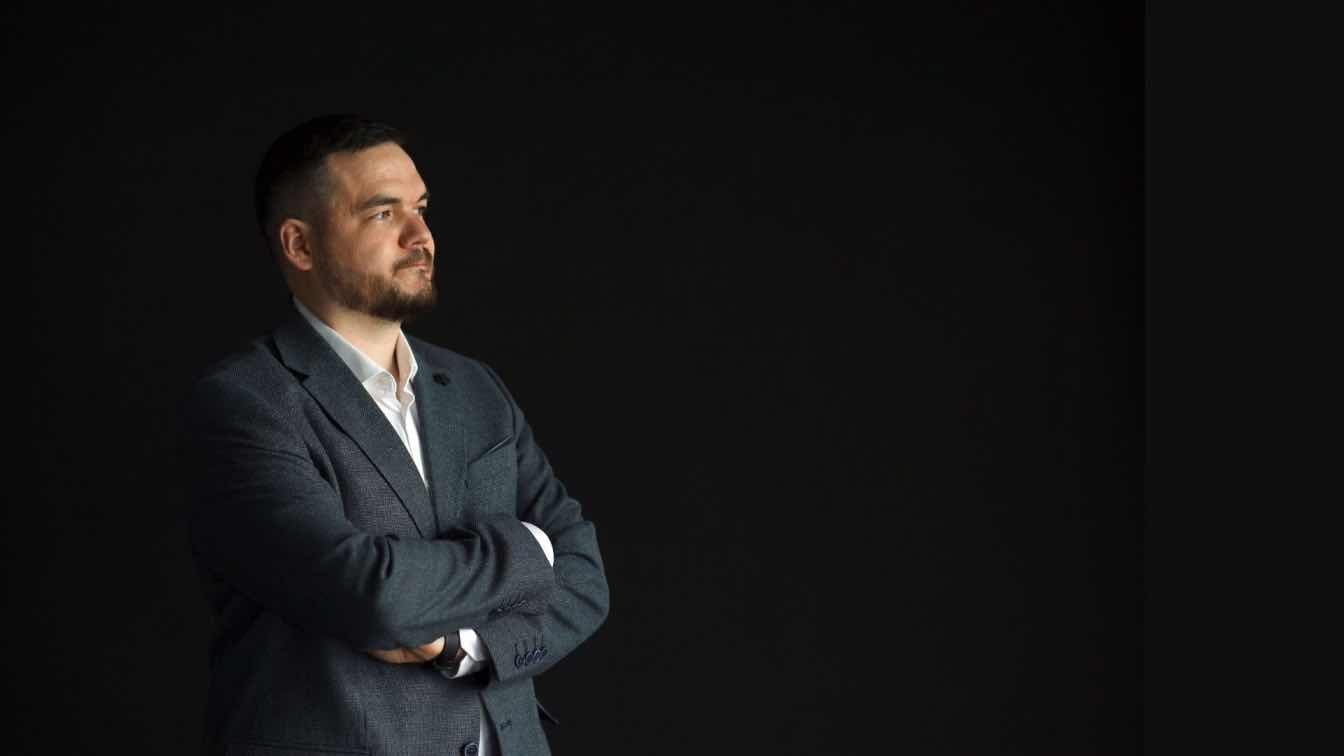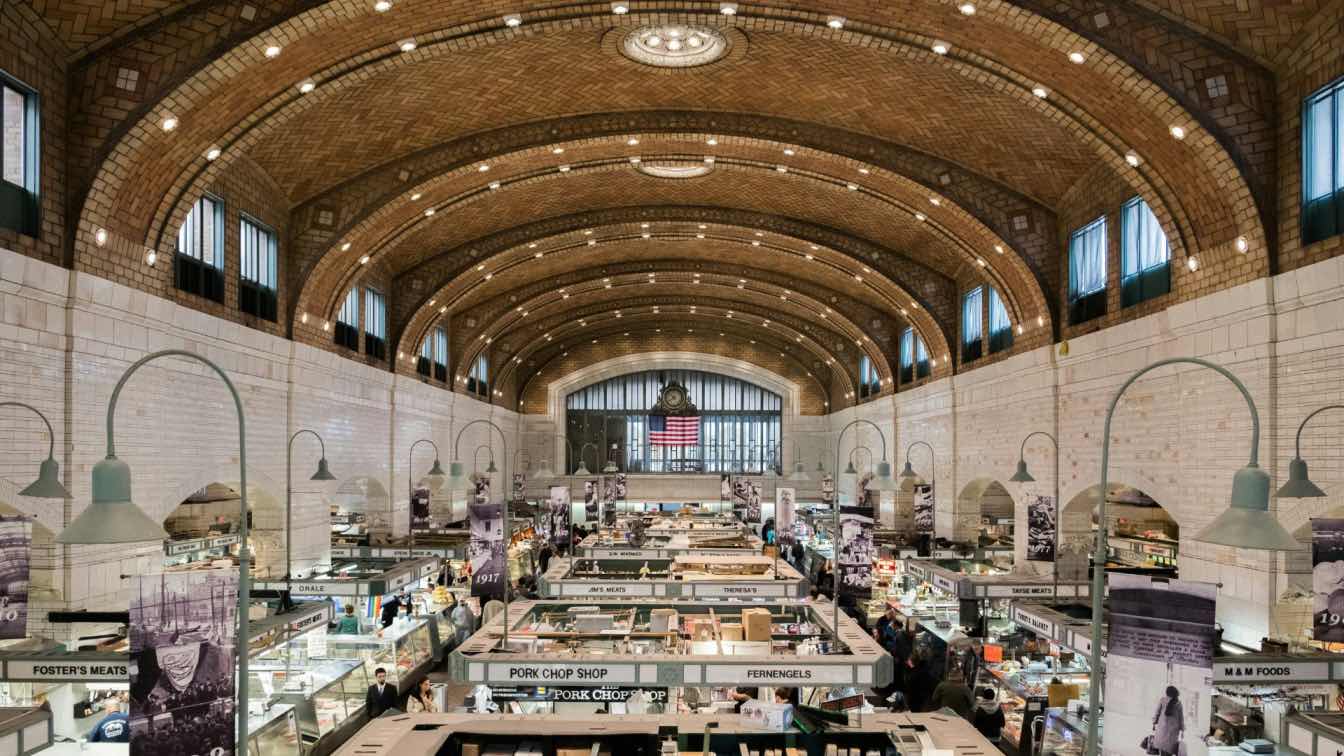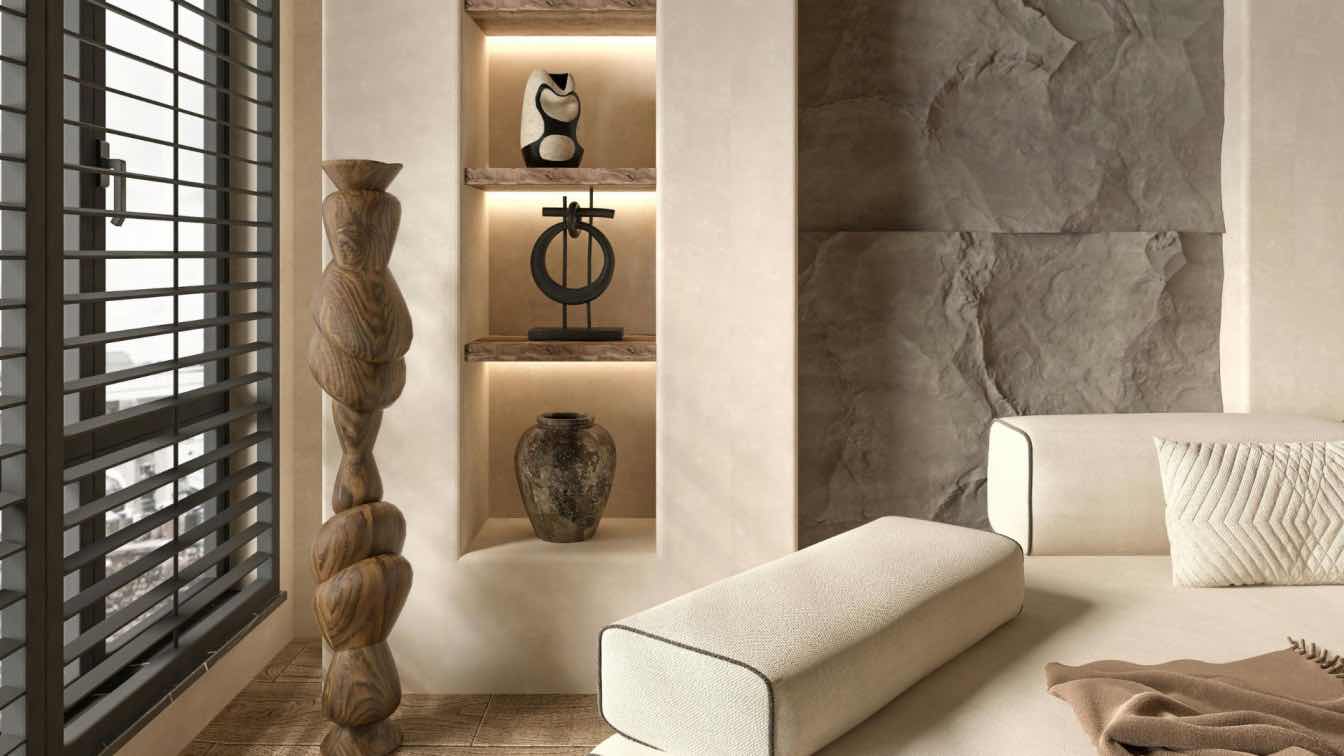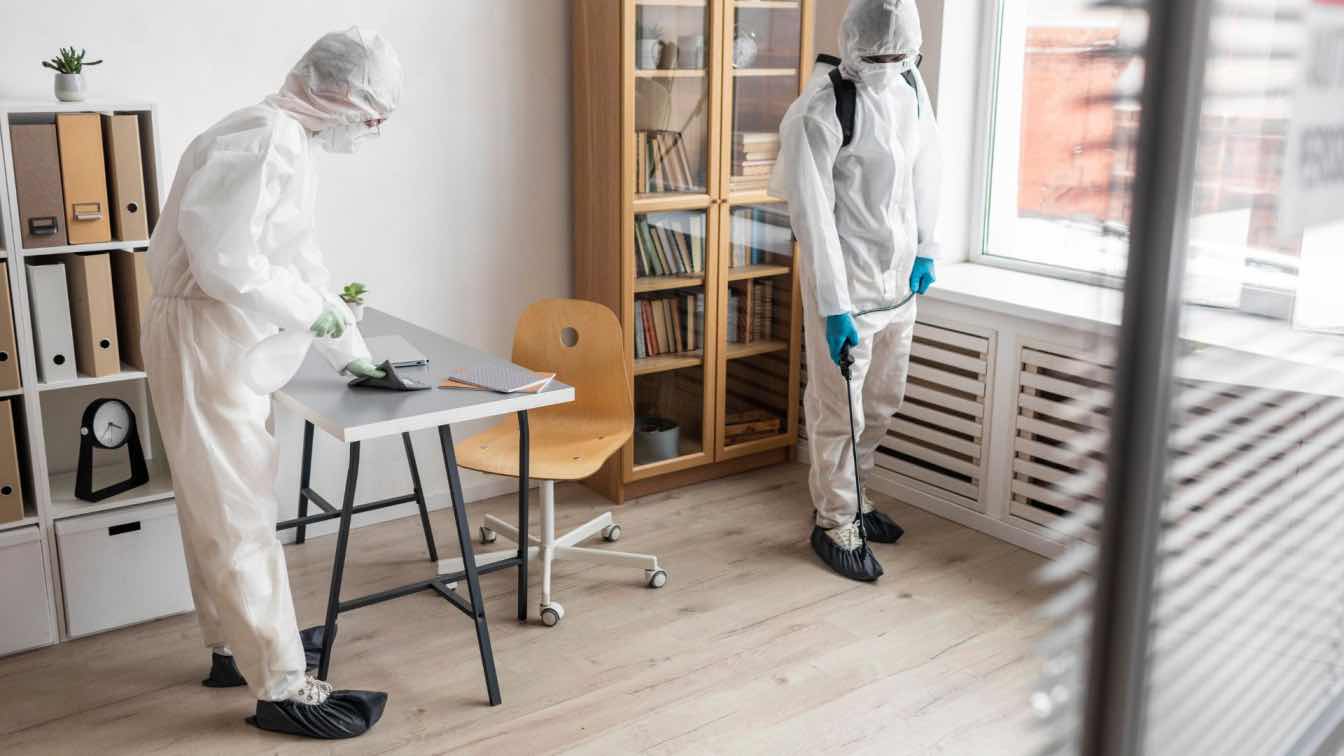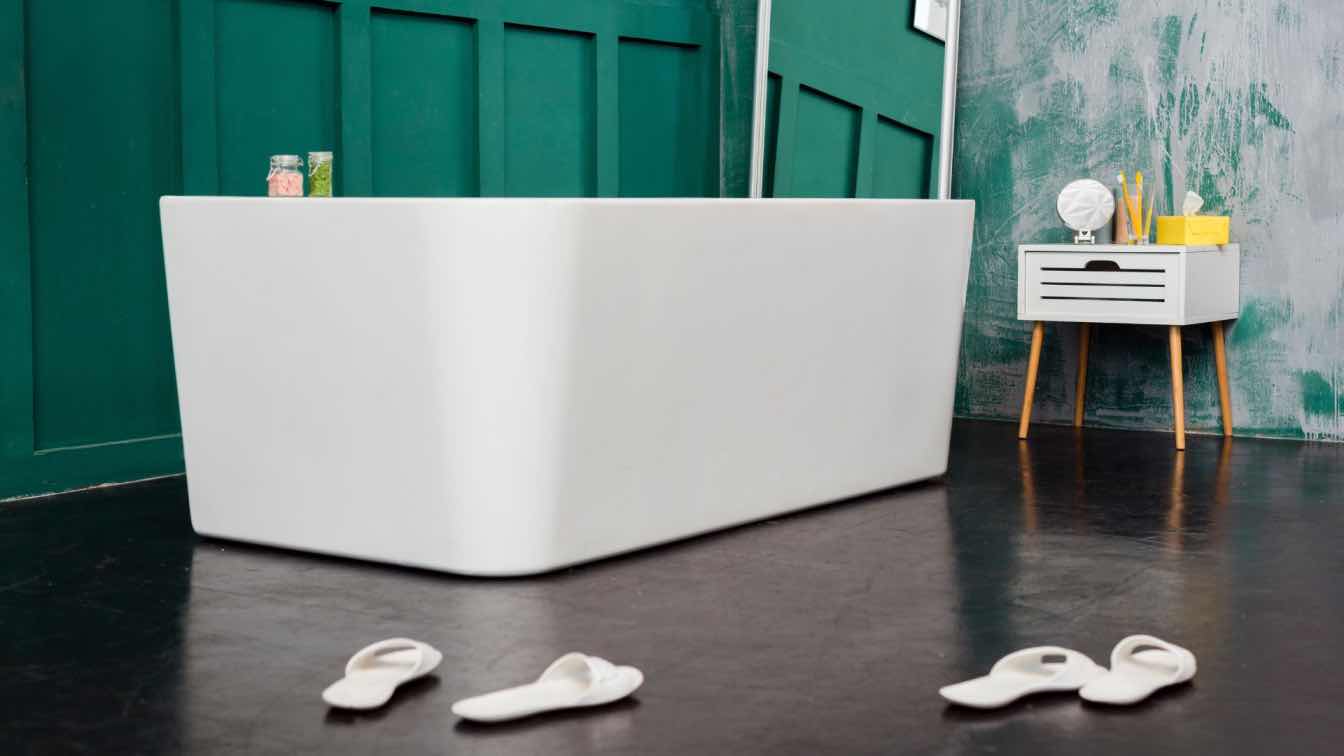Date: 28 August, 2024
The main architectural trends of 2024-2025 emphasize community-oriented projects, according to a study by the British professional portal Dezeen. The core ideas of this trend focus on modernizing, revitalizing, and rethinking existing urban environments, creating a sense of safety, environmental friendliness and comfort, and incorporating cultural elements, local context, historical traditions, and the cultural significance of the place.
In this context, the experience of realizing trends in local architectural markets, when national and historical identity is combined with global topical trends, is very interesting. Architect Eduard Gubeyev has become known for his solutions in this direction. His projects invariably delicately integrate innovative solutions into unique natural conditions and national traditions, be it revitalization of ancient cities, the ability to base modern architectural and planning solutions on ancient local crafts, or playing with forms that not only attract tourists but also increase the comfort of local residents. Such solutions bring him international victories - for example, two Eurasian Prize 2022 awards for turning the road to the old fortress into a functional urban artery in Arsk and the Yurievskaya Cave visitor center in the specially protected natural area of Kamskoye Ustye, which is perfectly integrated into the landscape.
Eduard Gubeev, one of the leading architects in Russia, consistently works within this framework. His professional interests are centered on addressing the challenge of integrating tradition with modernity—creatively reinterpreting cultural heritage and making it functional. Gubeev, head of his own architectural company M2M3, is an expert in public space architecture and the creator of unique social urban projects. He has collaborated with global design companies and participated in numerous projects across Russian cities, earning several prestigious national and international awards.
Gubeev's realization of his professional calling was sparked by the uniformity of the urban environment surrounding him. This monotony persisted even with the introduction of new trends, such as the total high-tech approach that replaced the standard panel buildings with an abundance of glass and metal. However, the gradual emergence of individual solutions, initially in the elite housing segment and later in social housing and mass construction, gave Gubeev hope: his personal ideas could captivate society.
The first evidence of his talent, which gave him the opportunity to get acquainted with the world experience and international practice, was an invitation to the oldest architectural bureau in Great Britain - the fourth-year student of Kazan State University of Architecture and Civil Engineering was selected from 120 brightest fellow students and invited: his unparalleled project of a car showroom with highways for testing off-road vehicles attracted attention. A similar car showroom would be built by Land Rover only ten years later.
Upon his return, while still a student, diligently balancing studies with work, Eduard participated in the construction of residential complexes and shopping centers in Kazan, designing residential sectors in a fundamentally new style. Later, he gained invaluable experience working on unique modern projects, particularly in the historical part of the capital, as part of the team at Millennium Zilant City. His collaboration with leading American company NBBJ and the office of renowned Spanish architect Josep Acebillo enriched Eduard with knowledge and skills that later enabled him to successfully renovate a merchant house, a historic architectural monument in the Old Tatar Settlement of Kazan.
Eduard's involvement in shaping the architectural landscape of the capital provided him with experience in mastering large urban spaces and skills in working in a team of related professionals. Soon, Gubeev was leading a group of architects and later supervising the construction of projects. It was only natural that he was invited to work for the international company "Architecturnyi Desant" in a leadership role, where he not only managed a design department but also selected specialists.
"That’s when I myself reached a new level as a specialist," recalls Eduard. "I coordinated crucial decisions, conducted urban planning analysis, defined the main project vectors, and trained employees. Many of them are now in high demand and well-known in the professional community."
Working with the principles of city development, sensing the potential of a place and the desires of its inhabitants, and his meticulousness and extensive experience in creating public spaces, complex and targeted solutions for living, working, and recreation, led Eduard to open his architectural company. Orders quickly followed, with city and municipal leaders, major companies, and private clients turning to M2M3 for services. Today the bureau occupies leading positions in Russia and has gained unconditional authority not only among private customers, but also among state customers.
For Eduard, the size and prestige of a city do not matter when it comes to providing his professional services. He makes no distinctions in approaches or originality of solutions, and each of his projects is characterized by a grand scale. His portfolio includes many public space projects realized through competitive bids from small towns and historic settlements. Each time, this is a challenge to his ability to find the local cultural code, the key to the object, something no one in Tatarstan had done before Gubeev. He transformed a through street into the central square of the village of Rybnoe Sloboda, making it a focal point for residents. He connected the southern and northern parts of the city of Kukmor with a pedestrian promenade. He renovated the park and beach in Zelenodolsk, not only revitalizing key recreational areas but also saving green spaces that were at risk of being converted into construction sites. Even his targeted solutions were brilliantly original, like the "Marmot" playground on the banks of the Chernaya River in Aznakaevo, offering a view of the highest point in Tatarstan, Chatyr-Tau Mountain, and inspired by the district's symbol, the totemic animal marmot.
A separate and impressive success was the improvement of the ancient city of Arsk on the banks of the Kazanka River. In the 12th-13th centuries, a border outpost, the mighty Arsk fortress, was built on this site. The road leading to it remains part of the street from the railway station to the city center and a tourist attraction. Gubeev prioritized preserving all important details and paying attention to unique local crafts: his architectural solutions, small forms, and canopies incorporated characteristic Tatar woodcarving and unique leather mosaics. This unique embodiment of Tatar’s cultural heritage became one of the jewels of the Muslim world, attracting deserved attention at the international "Eurasian Prize" competition, the Russian "Zodchestvo" competition, and the World Expo 2022 in Dubai (UAE).
A popular destination and subject of blogger reviews became the colossal beach on the reservoir in Zainsk, personally funded by the President of Tatarstan, with no analogs in Russia. This circular dry beach with a wooden deck extended over the water, offering a progressive solution to the problem: the natural sandy beach in Zainsk was too small.
Eduard has a keen and accurate sense of not only historical context but also the harmonious features of the living environment. As part of a project commissioned by the Republic of Tatarstan, he managed to improve the "Kamskoye Ustye" nature reserve, and in 2020, he proposed striking solutions for the development of the "Dingez – the Sea of Tatarstan" eco-resort, which won the All-Russian competition for the creation of tourism and recreation clusters and the development of ecotourism. As a result, the "Yurievskaya Cave" natural site in the ecopark became a tourist attraction, and the entire project significantly contributed to the region's economic growth.
"Ecotourism requires a completely different architecture, fundamentally different from urban architecture. The principles of designing and arranging urban environments have long been established, but ecotourism facilities are still largely underexplored," explains Eduard. "Traditionally, the infrastructure of reserves, protected natural areas, and other natural sites has been managed by foresters, who focused on wellness and ecological trails without considering mass visitation. I studied the experience of national parks in America, Europe, and Asia and came to a new understanding of how to organize such tourist sites. Architecture must be integrated into a specific place with geological and landscape features that cannot be altered; they must be adapted to. The architect's talent lies in ensuring that the appearance of the place remains unchanged for decades while meeting modern ecological, economic, safety, and connectivity requirements and business needs."
Naturally, all these projects earned Gubeev professional awards and victories in various competitions. For example, at the EURASIAN PRIZE (The International Awards in Architecture and Design) XVII season in 2022, the "Yurievskaya Cave" visitor center in Kamskoye Ustye, a building with terraces and stained glass windows that magnetically attracts tourists, was awarded the bronze prize. The People's Choice Award went to the road project in Arsk, titled "Tatar Legends. Returning Home Along The Old Road." Additionally, the pedestrian bridge over the Kazanka River won the "Small Object. Audience Choice" category in the ARHIWOOD awards. The Union of Architects of Russia awarded a diploma to the shaded pavilion on the banks of the Chyornaya River.
Gubeev's involvement in key urban improvement projects and the creation of a recognizable cityscape for the next 20 years have established him as one of leading architects and a top Russian expert. It's no surprise that he became the recipient of Russia's national "Creative Industries 2024" award in the Architect of the Year category.
Through his extensive experience with numerous tender applications, Gubeev has precisely defined his professional mission: creating a comfortable urban environment that blends modern requirements with a sensitive and delicate approach to cultural and historical heritage and national identity. He has applied this experience not only in practice but also in theory, formulating key principles to assist both established and aspiring colleagues.
His first book, "Standard Solutions for Unconventional Recreational Spaces in Nature," consolidates the practical experience of a large group of specialists, with Gubeev serving as a technical expert. This guide is a sort of catalog of original architectural solutions from around the world, describing ready-made methods for implementing each one.
The second publication, a methodological guide for professional architects, titled "How to Win in the Best Projects for Creating Comfortable Urban Environments in Small Towns and Historic Settlements," was initiated by the Institute for Urban Development of the Republic of Tatarstan.
"The Small Towns Competition is a major federal grant competition that provides funding for urban improvement projects. The book is based on the unique practical experience accumulated over several years in the implementation of projects and urban planning analysis, ranging from individual to global solutions," explains Gubeev. "My company often won grants, and in the guide, I explain how to meet the competition's requirements, effectively prepare an application, and significantly increase the chances of securing a grant. The federal competition is almost the only way to obtain substantial funding for the improvement of small towns, which is why the guide is very popular among my Russian colleagues."
Gubeev's colleagues also note an important trait that he consistently emphasizes in his books: Gubeev always starts with the real needs of the residents. He considers his primary task not to impose ready-made solutions on people but to base his work on their needs, communicate with them, listen and understand them, and propose high-quality ideas and socially significant projects that are perfectly suited to the context of the specific area. Participating in Tatarstan's improvement program, he had many discussions with citizens about what they wanted to see in important daily life spaces—parks, squares, and shopping streets. He ensured that their wishes and demands were taken into account during the design process, making the people feel involved in the improvement of their city. For example, the calligraphic writing of the city name "Aktanysh," created by a local student, became the city's brand and was used in small architectural forms.
Gubeyev doesn't just write books. He is interested in how modern trends are seen and combined with his own ideas by colleagues who are just entering the profession. He has been a jury member in various competitions, including the federal "Student of the Year. Architects". As an expert, he has participated in educational programs for the continuing professional development of architects, spoken at the All-Russian Urban Forum, and published several articles on the challenges of organizing public spaces, architectural oversight, the future of urban infrastructure for improving quality of life, the development of social projects, and innovative solutions for improving the ecological environment. Gubeyev has been invited to lecture at universities and lead mentoring workshops. His goal is to accumulate the valuable knowledge gained through years of practice and pass it on to the next generation of architects. Today, he envisions his mission even more broadly and is ready to share his experience in creating comfortable urban environments in other countries.
"Every person is a small unit of society, and to create comfort for society as a whole, you have to start small," Gubeev explains. "Even when working on large projects, I always remembered that each person is unique, and it is to this individuality that I want to appeal in architecture. The key is not to repeat yourself year after year or replicate even successful solutions. Every time, I strive to come up with and develop something new, unique, and specifically designed for a particular area."

